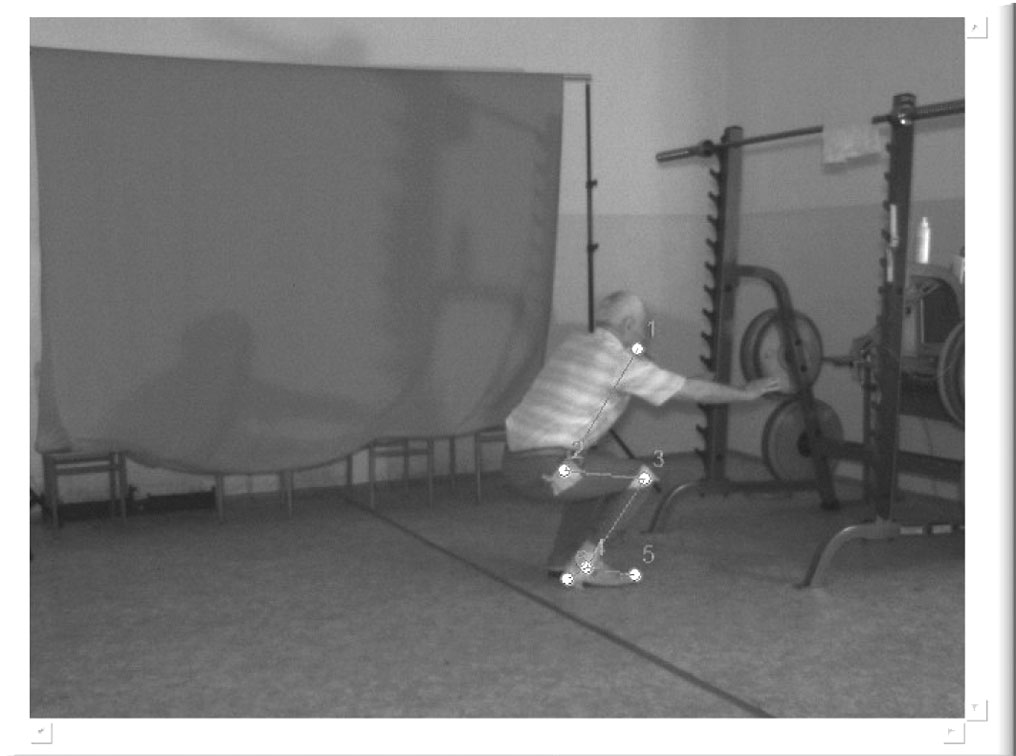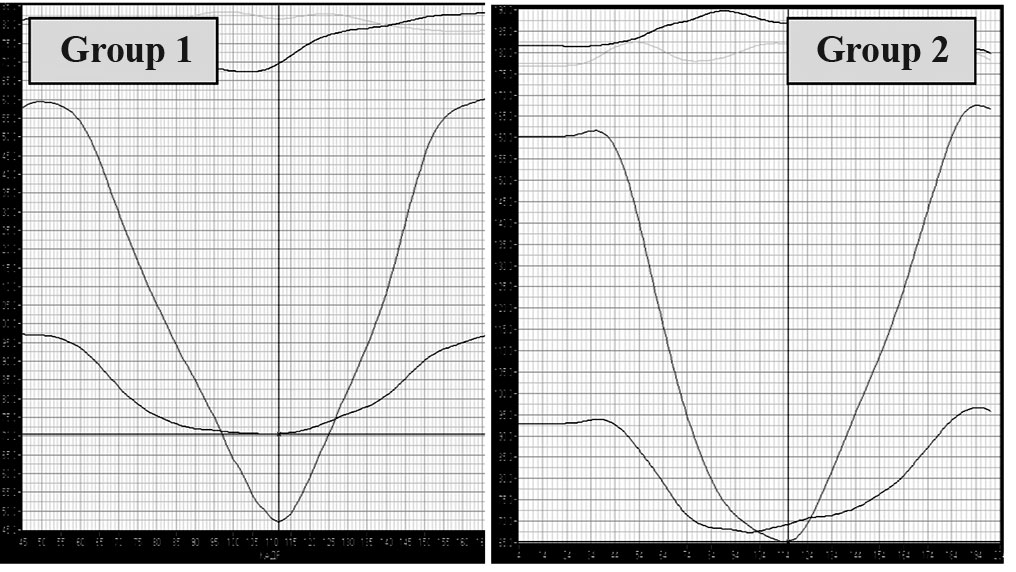senior-age-specific regress in joint movement patterns in squatting practices
Фотографии:
ˑ:
Dr.Hab., Dr.Biol., Professor K.D. Chermit1
PhD, Associate Professor А.G. Zabolotny1
S.V. Pryakhin2
1Adyghe State University, Maikop
2Moscow Technological University, Moscow
Keywords: natural regress of movement function, aging process, spatial and temporal structure of joint angular movement sequence.
Background. Premature aging prevention related issues and studies are in growing priority in modern medicine, biology, educational science and adaptive physiology. Findings of such studies are mostly indicative of the physical activity being beneficial for active life prolongation with age. Notwithstanding the progress of such studies and the common recognition of the active life prolongation effects of physical activity, the issues of aging-related regress of natural locomotion in different physical activities are still underexplored in the modern studies. It should be emphasized that it is the natural locomotion control mechanisms that determine the opportunities for physical activation and progress in the senior and declining age [2, 4].
Objective of the study was to identify and rate the regressive spatial and temporal changes in the joint angular movement structures in squat practices performed by senior and declining-age people.
Methods and structure of the study. The study was performed at the Ergonomic Biomechanics Study Laboratory of Adyghe State University. Subject to the tests was a sample of senior and declining-age people doing squats at comfortable pace: see Figure 1.

Figure 1. Studies of the squat kinematics in senior and declining-age people: 74 year-old L…v.
The movement kinematics was registered by a 3D optical video-capturing system Biosoft. Subject to the tests were 60-80+ year-old people, with 60 squats captured by the Biosoft system followed by the video data processing by the VideoMotion_3D software toolkit.
Study results and discussion. The study data were used to profile the angular movement trajectories in the knee, ankle and hip joints, followed by the profiles being compared with thoseof adult powerlifters and 5-6 year-olds [1, 3, 5]. It was found that graphically the joint angular movement sequence may be represented as a parabolic curve with its left and right wings characteristic of the downward and upward phases (with the spatial and temporal structure) of the squat. It should be noted that the spatial and temporal structure of the joint angular movement sequence in the upward movement phase was found opposite to that in the downward movement phase; and the higher was the motor skill the more expressed was this correlation. The spatial and temporal structure of the joint angular movement sequence was found fully formed well before the powerlifting practices. In 67% of the tested groups, the structure was found formed by the age of 5 years, and in 86% by 6. However, the formation periods of the spatial and temporal structure of the joint angular movement sequence were different for different joints: in the knee joint it is formed by the age of 5-6 and in the ankle and hip joint in later age (1, 6, 7). Furthermore, the study found the spatial and temporal structures of the joint angular movement sequence in the knee joint to be dominant for the squat i.e. driving the base spatial structure of the squat sequence. Upon full formation, the movement structure is highly balanced and largely independent of the visual controls that is indicative of the movement control mechanism being dominated by the proprioceptive rather than visual controls.
Having analyzed the test data and angular movement diagrams of the senior age people, we split up the sample into the following two groups. Group 1 was composed of the people with the spatial and temporal structure of the joint angular movement sequence tested fairly close to the standard parabolic curve: see Table 1 hereunder and Figure 2.
Table 1. Test sample grouped by the knee joint angular movement diagrams
|
Group 1 |
Group 2 |
||
|
Name |
Age |
Name |
Age |
|
83 |
1. Z…j |
82 |
|
73 |
2. L…v |
74 |
|
71 |
3. L…a |
74 |
|
66 |
4. G…v |
73 |
|
61 |
5. D…k |
68 |
|
Average х±σ |
70,8±7,3 |
6. S…v |
68 |
|
Average х±σ |
73,1±5,1 |
||

Figure 2. Typical angular movement variation in ankle, knee and hip joints of senior people classified into Group 1 and Group 2: 74 year-old L…v (Group 1); and 83 year-old G…v (Group 2).
It should be noted that the spatial and temporal structure of the knee joint angular movement sequence in the upward (extension) movement phase was opposite to that in the downward (flexion) movement phase in Group 1. Group 1 was composed of 5 people including two 60+ year-olds, two 70+ year-olds and one 80+ year-old, with the average group age estimated at 70.8±7.3 years. The closeness of the spatial and temporal structure of the knee joint angular movement sequence in the declining- and senior-age people is indicative of the squat movement control dominated by the proprioceptive control mechanism, with a high degree of retention of the natural motor skills.
Group 2 was composed of 6 people including two 60+ year-olds, three 70+ year-olds and one 80+ year-old, with the average group age estimated at 73.1±5.1 years versus 70.8±7.3 years in Group 1, with the data arrays showing insignificant difference: see Table 1 and Figure 2. It should be noted that the spatial and temporal structure of the knee joint angular movement sequence in the upward (extension) movement phase was in no opposite correlation with that in the downward (flexion) movement phase in Group 2. The flexing joint angular movement trajectory was more flat, whilst the extension trajectory was steeper: see Figure 2. In addition, Group 2 showed expressed irregularities in the spatial and temporal structure of the joint angular movements in the serial squats. Similar irregularities were detected in 9.8% of the 5 year-olds and 4.8% of the 6 year-olds and, hence, the effect may be attributed to the underdevelopment of the basic spatial and temporal structure of the joint angular movement sequences in this age group. In the declining- and senior-age people such irregularities are found in more than a half of the sample and may be indicative of the regressive changes in the knee joint angular movement control mechanism with disorders in the basic motor action controls – i.e. transition from the prioprioceptive controls to the visual controls with the growing domination of the conscientious movement controls due to the disorders in the natural (automatic) control system. This phenomenon may be found only in some phase of the movement sequence, particularly in the downward squat movement phase. It should be noted that when the natural automatic movement control mechanism is still partially operable, we have good reasons to expect that it can be recovered via focused trainings.
The fact about the insignificant intergroup age differences in Group 1 (tested to largely retain the natural controls as verified by the spatial and temporal structure of the knee joint angular movement sequence) versus Group 2 (tested with regressive disorders in the spatial and temporal structure of the knee joint angular movement sequence) gives good reasons to believe that the regressive changes in the movement kinematics are triggered by the lifestyles and individual traits of the declining/ senior age people rather than their age as such.
The study of the squat movement sequence biomechanics in the declining/ senior age people found the following:
- The spatial and temporal structure of the knee joint angular movement sequence may be recommended as the key criterion to detect and rate aging-related regresses in the squat movement sequence kinematics.
- Disorders in the spatial and temporal structure of the knee joint angular movement sequence are associated with irregularities in the angular movements, with the spatial and temporal structure of the angular movement sequences in the downward movement phase being opposite to those in the upward movement phase.
- Regressive changes in the movement kinematics are triggered by lifestyles and individual traits of the declining/ senior age people rather than their age as such.
- Movement function disorders are associated with the central movement control mechanism being increasingly dominated by the visual (conscientious) rather than proprioceptive (natural) controls.
- The transition of the central movement control mechanisms from the proprioceptive to visual controls with the aging-related movement functionality regress on the whole and in the squat sequence in particular is rather disproportional: first it is diagnosed it the downward movement of the squat phase and then may be found in the upward movement phase.
- Conclusion. The motor functionality regress with aging may be classified into the following two stages: stage one of the reversible motor functionality regress in the basic spatial and temporal structure of some partial movement sequence, with the natural (automatic) movement controls associated with partial conscientious (visual) controls; and stage two of the irreversible motor functionality regress with the basic spatial and temporal structure of the whole movement sequence indicative of the conscientious (visual) controls dominating over the natural automatic controls.
The study was partially sponsored by the Moscow Technological University Faculty Motivation System funds.
References
- Zabolotny A.G., Bguashev A.B., Tkhakumacheva Yu.B. Soglasovanie uglovykh peremescheniy detmi starshego doshkolnogo vozrasta v khode vypolneniya estestvennykh lokomotsiy [Coordination of angular movements by senior preschool children when performing natural locomotions]. Vestnik AGU. Ser.: 'Estestvennye matematicheskie i tekhnicheskie nauki'. Maikop, 2015, no.
- Isakov A.O., Chermit K.D., Tuguz E.I. Vozrastnye izmeneniya struktury tsikla odinochnogo shaga pri khodbe v pozhilom vozraste [Age-related changes in single-step cycle structure when walking in old age]. Fizicheskaya kultura, sport – nauka i praktika, 2013, no. 4, pp. 58-61.
- Chermit K.D., Zabolotny A.G. Izmenenie kinematicheskikh kharakteristik v khode prisedaniya so shtangoy v pauerliftinge [Changes of kinematic characteristics when doing squats in power lifting]. Teoriya i praktika fiz. kultury, 2013, no. 8, pp. 71-76.
- Chermit K.D., Zabolotny A.G., Tuguz E.I. Regressivnye izmeneniya estestvennykh lokomotsiy v niskhodyaschey vetvi ontogeneza [Regressive changes in natural locomotions in descending line of ontogenesis]. Vestnik Adygeyskogo gosudarstvennogo universiteta. Ser.: ‘Pedagogika i psikhologiya’, Maikop, 2012, no. 4, P. 76.
- Chermit K.D., Zabolotny A.G., Bguashev A.B. Formirovanie prostranstvenno-vremennogo poryadka uglovykh peremescheniy pri vypolnenii prisedaniya u detey starshego doshkolnogo vozrasta [Formation of space-time order of angular displacements during squat in senior preschool children]. Fizicheskaya kultura, sport – nauka i praktika [Physical education, sport – science and practice]. Krasnodar, 2015, pp. 32-38.
Corresponding author: zabolotniy-tol1@yandex.ru
Abstract
It is common knowledge that every bodily function tends to degrade with age, with active physical practices viewed as the only way to slow down the aging-related regress. The aging-related locomotion functionality degrading process needs to be objectively rated by the relevant rating criteria to design the categorical physical practices for senior and declining-age people. The locomotion data was obtained for analyses by a 3D optical video-capturing system. The study gives the ankle, knee and hip joint angular movement sequence capturing data with the squats profiling diagrams. The aging-related regress diagrams for the joint angular movements rated by the relevant spatial and temporal parameters were obtained and compared with the relevant data for senior preschoolers and powerlifters.




